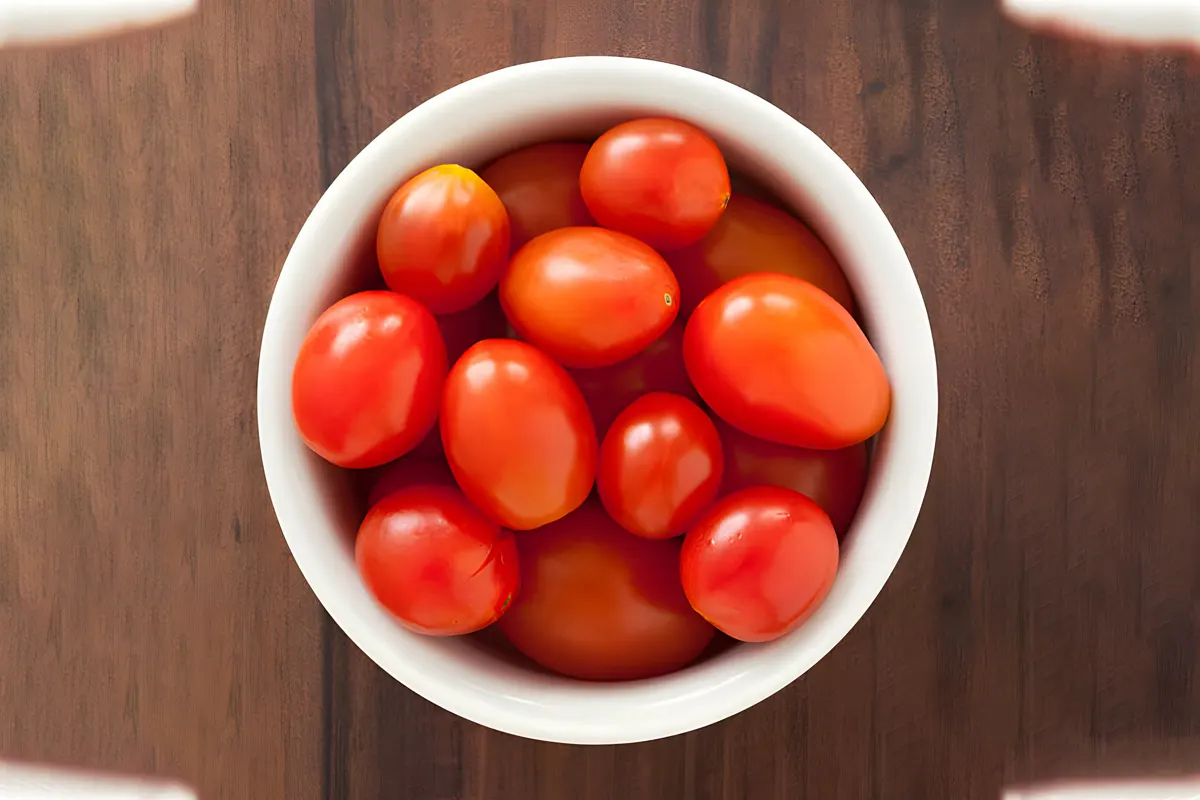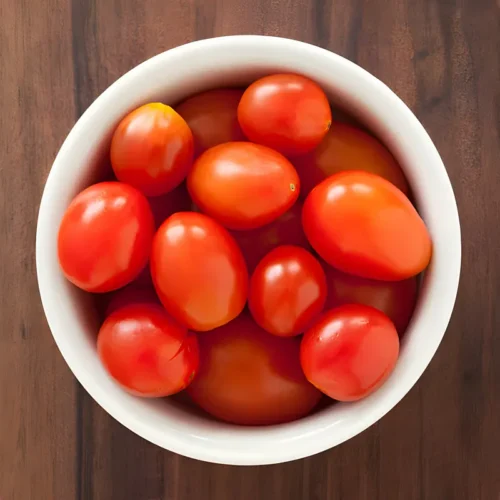One of the main reasons plum tomatoes are preferred in the culinary world is their low moisture content compared to other tomato varieties. This quality means that when cooked, they reduce perfectly to create concentrated flavors without the excess water that often dilutes sauces. If you've ever wondered why a restaurant's marinara sauce always seems to have a depth of flavor or a robust consistency, plum tomatoes are often the secret ingredient behind that culinary magic.
Plum tomatoes come in several varieties, the most popular being Roma and San Marzano tomatoes. Each variety boasts its own distinct flavor profile and cooking qualities, tailored for specific dishes. San Marzano, for instance, is revered for its sweetness and is often hailed as the gold standard for making pizza sauce and authentic Italian pasta sauces. Meanwhile, Roma tomatoes shine in making hearty sauces and canning.
But how can you best utilize plum tomatoes in your own kitchen? Whether you're looking to enhance your pasta game or create a homemade salsa that will impress your friends and family, understanding the nuances of this versatile fruit can take your culinary creations to the next level. In this blog post, we will dive deep into the world of plum tomatoes, exploring their unique characteristics, nutritional benefits, and a variety of delicious recipe ideas that will help you make the most of this incredible ingredient. Whether you're a seasoned chef or a novice cook, plum tomatoes are sure to become a staple in your kitchen repertoire.
Health Benefits of Plum Tomatoes
Plum tomatoes, known for their rich flavor and meaty texture, offer numerous health benefits that make them a fantastic addition to a balanced diet. These nutrient-dense fruits are particularly favored for their versatility in cooking, but their health aspects should not be overlooked.
1. Rich in Nutrients
Plum tomatoes are packed with essential vitamins and minerals, including vitamin C, potassium, and folate. Vitamin C is crucial for immune function and skin health, while potassium helps regulate blood pressure and supports heart health. Folate is essential for cell division and optimal fetal development during pregnancy.
2. High in Antioxidants
One of the standout features of plum tomatoes is their high antioxidant content, particularly lycopene. Lycopene is known for its potential to protect against certain cancers, particularly prostate and stomach cancers. Studies have shown that lycopene can also reduce the risk of heart disease by combating oxidative stress and inflammation in the body.
3. Promotes Digestive Health
Plum tomatoes are an excellent source of dietary fiber, which is vital for maintaining healthy digestion. A fiber-rich diet can help prevent constipation, support healthy gut bacteria, and reduce the risk of digestive disorders such as diverticulitis. Incorporating plum tomatoes into salads, sauces, or as cooking ingredients can significantly increase your daily fiber intake.
4. Weight Management
Low in calories yet high in water content, plum tomatoes make a satisfying addition to meals without contributing to weight gain. Their fiber content further enhances satiety, helping you feel full for longer periods. Choosing plum tomatoes over calorie-dense snacks can be a smart strategy for those looking to manage or lose weight.
Incorporating plum tomatoes into your diet provides a delicious way to reap numerous health benefits. From antioxidants that support heart health to their fiber that promotes digestion, plum tomatoes are a powerhouse of nutrition that can easily elevate your meals.
Delicious Recipes Using Plum Tomatoes
Incorporating plum tomatoes into your cooking can elevate your culinary creations with their unique flavor and texture. Here are some delicious recipes that make the most out of this versatile ingredient.
1. Plum Tomato Salsa
A fresh plum tomato salsa can bring vibrant flavor to your dishes. Simply dice plum tomatoes, red onions, and peppers, then mix in lime juice, cilantro, and a sprinkle of salt. This salsa pairs perfectly with grilled meats, tacos, or as a refreshing dip with tortilla chips.
2. Roasted Plum Tomato Pasta
Create a simple yet satisfying roasted plum tomato pasta. Toss halved plum tomatoes with olive oil, garlic, and herbs, then roast them until caramelized. Combine with your favorite pasta, add a splash of pasta water, and finish with grated Parmesan for a comforting meal.
3. Plum Tomato Soup
A classic plum tomato soup is perfect for chilly days. Sauté onion and garlic before adding chopped plum tomatoes, vegetable broth, and herbs. Simmer until thickened, then blend until smooth for a creamy texture. Serve hot with crusty bread for a delightful lunch or dinner.
4. Stuffed Plum Tomatoes
Stuffed plum tomatoes make an elegant appetizer. Hollow out the tomatoes and fill them with a mixture of quinoa, feta cheese, spinach, and herbs. Bake until the tomatoes are tender, and serve warm. These stuffed delights are not only nutritious but visually appealing as well.
These recipes highlight the adaptability of plum tomatoes, allowing you to enjoy their flavor and health benefits in various ways. Whether as a fresh salsa, comforting soup, or a delightful stuffing, plum tomatoes can add excitement to your menu.
Tips for Selecting and Storing Plum Tomatoes
When it comes to choosing the perfect plum tomatoes, there are specific tips to ensure you select high-quality fruits that will enhance your meals. Plum tomatoes, often valued for their firm texture and rich flavor, are ideal for sauces, salads, and cooking. Here are some key tips to consider when selecting and storing them.
1. Look for Firmness and Color
When selecting plum tomatoes, it’s essential to inspect their firmness and color. Choose tomatoes that feel heavy for their size and have a slight give when gently squeezed. The skin should be vibrant in color, whether it’s deep red or yellow, without any blemishes or wrinkles. For example, look for tomatoes that are uniformly colored and have a shiny exterior, indicating freshness.
2. Check for Aroma
The aroma of a plum tomato can be a good indicator of its flavor. Fresh tomatoes should have a sweet, earthy smell, especially near the stem. If you can’t detect any scent, it might indicate a lack of ripeness. Opt for those with a strong, pleasant fragrance, which typically signifies better taste.
3. Consider the Season
Plum tomatoes are typically in season from late summer to early fall. Purchasing locally grown tomatoes during this time ensures peak freshness and flavor. If you’re shopping outside this season, consider seeking out greenhouse-grown tomatoes or organic options, which might offer a more authentic taste compared to imported varieties.
4. Proper Storage Techniques
Once you’ve selected the perfect plum tomatoes, proper storage is crucial to maintaining their quality. Store them at room temperature and away from direct sunlight until they are fully ripened. Place them stem side up to prevent bruising. If you notice any overripe tomatoes, consume them immediately or store them in the refrigerator to halt further ripening. For longer-term storage, consider canning or freezing your plum tomatoes—they retain their flavor and texture beautifully!
By following these tips for selecting and storing plum tomatoes, you can ensure that you get the most flavor and nutrition out of this versatile fruit. Enjoy them fresh in salads or transform them into delicious sauces—the possibilities are endless!

Plum Tomatoes: Benefits, Recipes, and Tips - RecipeStrip
Equipment
- Knife
- Cutting board
- Pot
- Pan
- Stirring spoon
Ingredients
Fresh Ingredients
- 500 g plum tomatoes Ripe and fresh
- 2 tbsp olive oil
- 1 clove garlic Minced
- 1 tsp salt
- 1 tsp black pepper
Instructions
- Wash and chop the plum tomatoes into halves or quarters.
- In a pot, heat the olive oil over medium heat.
- Add minced garlic and sauté for 1-2 minutes until fragrant.
- Add the chopped plum tomatoes, salt, and pepper to the pot.
- Simmer for about 30 minutes, stirring occasionally until tomatoes are soft.
- Serve warm as a side or use in pasta dishes.
Notes
Can I substitute other tomatoes for plum tomatoes?
Yes, Roma tomatoes are a great substitute due to their similar texture and flavor.
How should I store leftover plum tomatoes?
Store them in a cool, dry place or in the refrigerator for up to a week.
What is the best way to prepare plum tomatoes for cooking?
Roasting or sautéing enhances their natural sweetness and flavor.
Conclusion
In summary, plum tomatoes are a delightful and versatile ingredient that can elevate your cooking. Understanding how to select high-quality, ripe plum tomatoes involves paying attention to firmness, color, and aroma. By choosing tomatoes in season, you can enjoy the best flavor and freshness. Once chosen, proper storage is essential to maintain their quality, whether you choose to keep them at room temperature or preserve them for later use.
As you incorporate plum tomatoes into your meals, remember their numerous culinary applications, from fresh salads to rich sauces. Don't hesitate to experiment with these vibrant fruits in your kitchen. Share your favorite plum tomato recipes or tips in the comments below, and visit our blog for more insights on selecting and cooking with seasonal produce. Enjoy the delicious flavors and health benefits that plum tomatoes can bring to your table!
